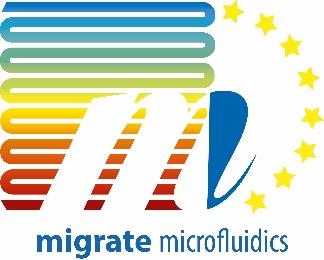|
|
|
Workshop > Workshop Keynote LecturesKeynote Lecturers You can download a short presentation of the Keynote Lecturers: Presentation_Keynote_Lecturers.pdf
Keynote Lectures abstracts
APPLICATION OF THERMAL BOUNDARY CONDITIONS AT THE MICROSCALE: A MEANS FOR FLOW GENERATION AND CONTROL Avshalom Manela Faculty of Aerospace Engineering, Technion, Haifa 32000, Israel In marked difference from incompressible fluid flows, microscale gas flows commonly couple the dynamic and thermodynamic fluid descriptions, through the combination of bulk-flow evolution and external boundary conditions. Yet, while the thermal boundary conditions have a significant effect on the generated flows, traditional studies on rarefied gas systems have been limited to gas-surface interactions where the surfaces temperatures are prescribed. Such an assumption, however, seems of little practical value, as the surface temperature at any experimental setup can only be imposed indirectly through a direct prescription of the boundary heat-flux. To examine this observation, the present work demonstrates the impact of replacing an isothermal surface condition with a heat-flux condition in a variety of one-dimensional and unsteady micro-flow setups. These include gas-flow animation problems, acoustic wave propagation, and active flow control applications. Possible extensions to higher-dimension configurations, including shear-driven flows and hydrodynamic instability problems, are also reviewed.
SAMPLING OF GASEOUS MIXTURES BY LONG CAPILLARIES. INFLUENCE OF VARIOUS FACTORS ON REPRESENTATIVENESS OF SAMPLES Felix Sharipov Physics Department, Federal University of Parana, Curitiba, Brazil When a sample of gaseous mixture is taken from some reactor, it is important to know if that sample really represents the reactor mixture. The representativeness of sample is determined by flow rates of all chemical species of the mixture. Under low pressure conditions, the flow rates depend on many factors, e.g., gas-surface interaction, mixture rarefaction, temperature drop between reactor and sampling recipient, etc. In the lecture, the main concepts of rarefied gases such as: gas rarefaction, accommodation coefficients (ACs), velocity slip phenomenon, will be briefly explained. Some examples of simple free-molecular flows and their dependence on ACs will be given. In sequel, the following issues will be considered: values of ACs extracted from experimental data, peculiarities of transport phenomena through gaseous mixtures, conditions to approximate gaseous mixtures by a single gas, general approaches to modeling transport phenomena through gaseous mixtures over the whole range of gas rarefaction, influence of inter-molecular potential.
VISUALIZATION OF 3D VELOCITY AND TEMPERATURE FIELDS WITH MICRON RESOLUTION Christian J. Kähler Institute for Fluid Mechanics and Aerodynamics, Bundeswehr University Munich, Germany christian.kaehler@unibw.de http://www.unibw.de/lrt7 The analysis of flows in microscopic dimensions has gained much attention in the last few decades. In the past, the μPIV technique was often sufficient to resolve the flow features in two dimensions. In recent years, however, more complex three dimensional flows have attracted the attention of scientists and engineers. The complexity is often a result of nonlinearities introduced by particle-particle or particle-wall interactions, bubble oscillations, or the manipulation of particles and bubbles with acoustic, electric or thermal fields. Multiphase effects, interactions and complex boundary conditions are used to efficiently mix in microscopic dimensions or to sort and analyze particles or cells for process engineering or biological and medical applications. To analyze complex flows, a 3D time resolved PTV measurement system has been developed which allows for the simultaneous measurement of the 3D velocity distribution along with the temperature field, or even more complex scalars such as pressure or chemical reaction indicators. In addition, errors due to depth-of-correlation, which are common in μPIV measurements, as well as misalignments of stereo or multi-camera approaches, can be avoided by using this technique. In effect, the system is both robust and accurate. The seminar will cover the basics and various applications of the mentioned Astigmatic Particle Tracking Velocimetry (APTV) techniques to illustrate its capabilities in actual research areas like electro-, thermo- and acoustophoresis, bubble streaming, droplet evaporation and mixing. |


